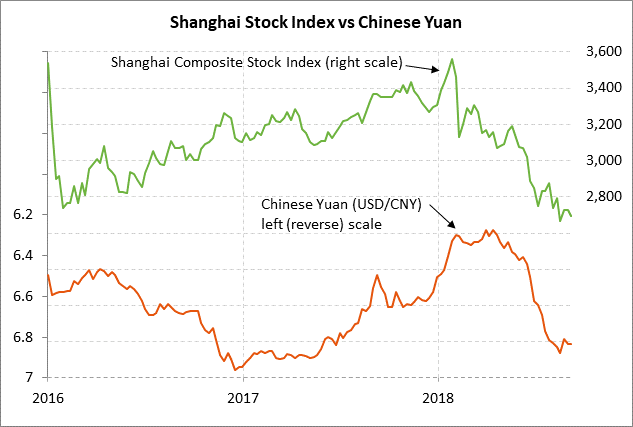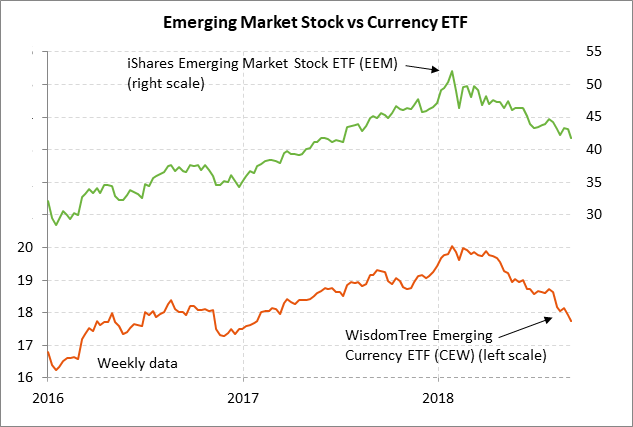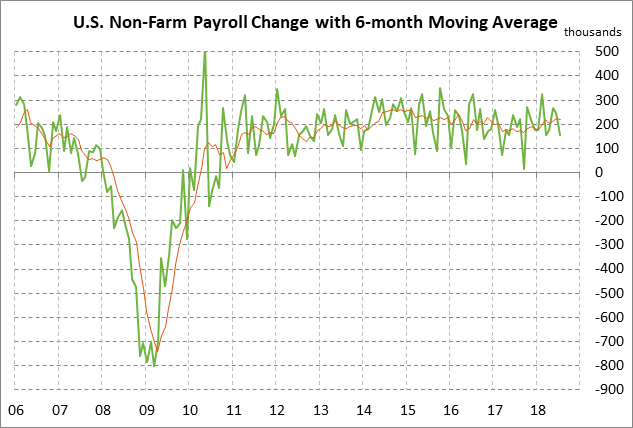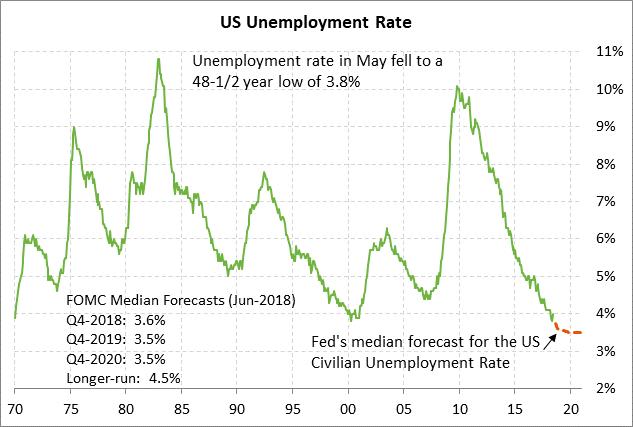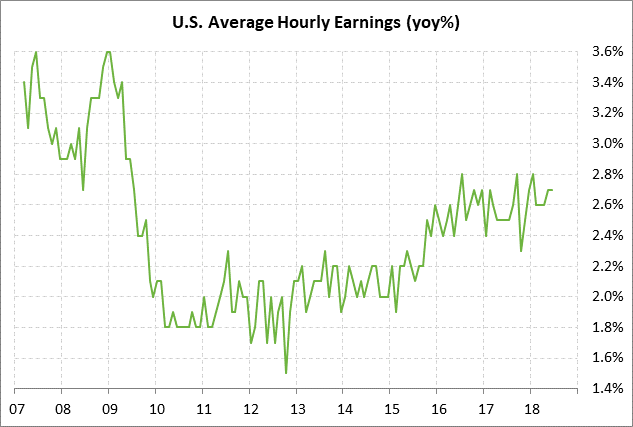- U.S. tariffs on China could be announced as soon as today, along with the threat of even more tariffs
- US/Canadian trade negotiations continue
- U.S. payroll growth expected to recover from July’s weak report
U.S. tariffs on China could be announced as soon as today, along with the threat of even more tariffs — The Trump administration as soon as today could announce tariffs of up to 25% on another $200 billion of Chinese goods since the public comment period ended yesterday. President Trump could announce the implementation of the tariffs effectively immediately or he could delay the implementation in order to provide some time for last-minute negotiations. China has already promised to retaliate with tariffs on another $60 billion of U.S. goods.
The markets seem to be at least partially prepared for the implementation of tariffs on another $200 billion of Chinese products, meaning the market reaction may not be particularly severe. However, there would likely be a much more bearish reaction if Mr. Trump pairs the announcement with a new initiative to slap tariffs on the remaining $275 billion of Chinese goods not covered by penalty tariffs. The U.S. imported about $575 billion of goods from China over the last 12 months. Mr. Trump may feel pressure to slap a tariff on all Chinese goods since his tariff moves thus far have not brought China to the bargaining table with nearly enough concessions to meet his administration’s demands.
There have been no mid or high-level US/China trade meetings since the last mid-level round failed on Aug 22-24. President Trump recently said he is not interested in the deal that China is offering and that the time is not right for talks. For its part, China seems resigned to simply wait and see if President Trump is more interested in dealing after the November mid-term elections.
US/Canadian trade negotiations continue — US/Canadian trade talks continued on Thursday. Canadian Foreign Minister Freeland said the “atmosphere continues to be good” and that there is “goodwill on both sides.” President Trump earlier this week said that it might become clear by this weekend whether the U.S. will be able to reach a new NAFTA agreement with Canada. However, the two sides appear to have several weeks until the deadline of Sep 30 when the Trump administration must deliver the text of a revised NAFTA agreement to Congress.
If there is a breakdown in the talks, then President Trump could move quickly to announce the official U.S. withdrawal from NAFTA and to impose retaliatory tariffs on Canada including a 25% tariff on Canadian autos, an event that would likely hit the markets hard.
U.S. payroll growth expected to recover from July’s weak report — The market consensus is for today’s Aug payroll report to show an increase of +195,000, recovering to trend after July’s weak report of +157,000. The weak July payroll report wasn’t particularly surprising since it came after very strong reports of +268,000 in May and +248,000 in June.
However, if today’s payroll report falls substantially short of the expected increase of +195,000, then talk may grow about whether the U.S. economy is starting to cool due to trade concerns and the dissipation of the stimulative effects from the Jan 1 tax cuts. Indeed, yesterday’s ADP report of +163,000 was weaker than market expectations of +200,000 and was a negative indicator for today’s payroll report.
Payroll growth has been particularly strong in recent months with a 12-month average of +200,000 and a 6-month average of an even higher +221,000. It would not be surprising to see payroll growth ease to a more moderate steady-state pace closer to +180,000 since most U.S. businesses seem to be well staffed given that they have hired a net 19.4 million new people since the Great Recession. The number of U.S. jobs is now 10.7 million higher than the peak seen before the Great Recession. Job growth may also slow as businesses have a harder time hiring employees that are qualified for the positions due to a labor shortage.
The consensus is for today’s Aug unemployment rate to fall by -0.1 point to 3.8%, thus matching the 48-year low posted earlier this year in May and before that in April 2000. The unemployment rate has already fallen to nearly match the Fed’s forecast for a rate of 3.6% by the end of this year and 3.5% in 2019-20. The current unemployment rate of 3.9% is well below the Fed’s estimate of a longer-run natural unemployment rate of 4.5%, which illustrates the current strength of the U.S. labor market.
Despite the tight labor market, the consensus is for today’s Aug average hourly earnings growth to remain unchanged from July at +2.7% y/y. Hourly earnings growth is hovering just 0.1 point below the 9-year high of +2.8% first posted late last year. While the consensus is for earnings to remain below +2.8%, the markets would become somewhat alarmed if earnings growth breaks out above +2.8% since that would put upward pressure on inflation.
Many market participants believe it is only a matter of time before earnings start to show stronger growth. Higher wages would be good for the economy but bearish for T-note prices. In the event of a surge in wages, the Fed might have to accelerate its rate-hike schedule to address the upward inflation pressure and prove its inflation-fighting resolve.

